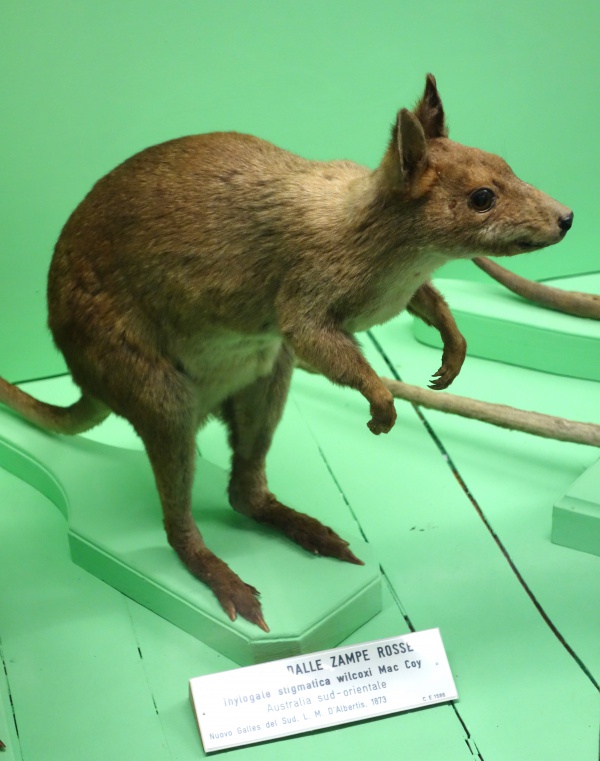Facts About Red-legged pademelon
The red-legged pademelon is a charming marsupial native to northeastern Australia and New Guinea. In Australia, they can be found from Cape York Peninsula in Queensland to Tamworth in New South Wales. In New Guinea, their habitat is primarily the south-central lowlands. These creatures are mostly solitary but occasionally congregate for feeding, inhabiting both rainforests and open areas. Although not considered endangered overall, they are listed as vulnerable in New South Wales.
These kangaroo relatives have a distinctive appearance, featuring grey-brown fur on their backs, creamy underbellies, and rust-colored legs. Their diet includes fallen fruit, leaves, and grasses, which aids in rainforest regeneration, although their grazing can sometimes impede tree growth.
While red-legged pademelons prefer rainforests, they are threatened by habitat loss due to land clearing. Their populations are fragmented, especially in northern regions with sparse suitable vegetation. However, they manage to thrive in fragmented forests that provide ample food. There are even different subspecies of red-legged pademelons depending on their geographic locations.
Reproduction involves the mother carrying her underdeveloped young in a pouch on her abdomen. Their life cycle includes stages such as gestation, mating, and the development of pouch young. A fascinating aspect of their reproduction is embryonic diapause, where embryonic development pauses until the previous offspring leaves the pouch. Females use vocalizations to communicate with their young.
Primarily nocturnal, red-legged pademelons are active at night and sometimes during the day. They tend to be solitary but will gather in groups to feed. Predators such as dingoes, tiger quolls, and amethystine pythons pose significant threats. To warn each other of danger, they rely on vocalizations and thumping sounds.
